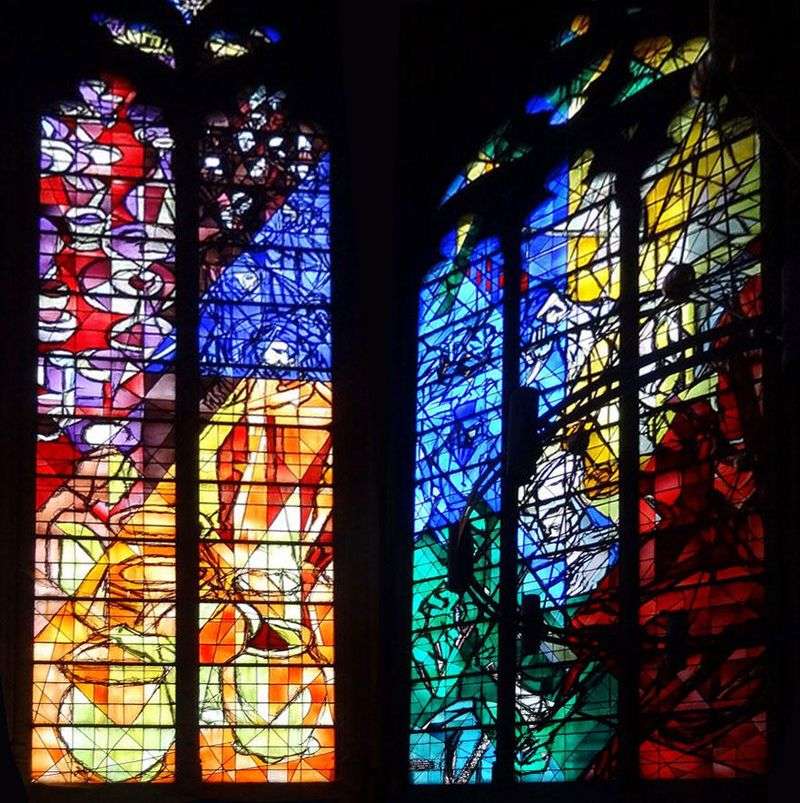
This large-scale work required Chagall more than 10 years. The main place was occupied by 11 compositions on the themes of the Old Testament:
– the creation of man,
– the creation of Eve,
– the fall,
– expulsion from paradise,
– the sacrifice of Abraham,
– Jacob’s dream,
– Battle of Jacob with an angel,
– receipt of Moses tablets,
– Burning bush,
– David and Bath-Sheba,
– the prophet Jeremiah.
As well as the stained glass windows of the Jerusalem synagogue, they with special power embody the experience of another reality, convey something unspeakable. As in Chagall’s painting, the space in the stained-glass windows, created by transitions of tones and leaden partitions, seems multifaceted and surreal. Through the windows of the cathedral inside comes as if all the light of the surrounding world. The stained-glass windows seem to build a second temple of color and light inside the cathedral.
While working on the stained-glass windows, Chagall performed cardboard on the basis of gouache and watercolor the size of the stained-glass windows, on which the contours of the leaden partitions and the color of the glasses were designated. At the request of the artist special glass plaques were made, thinly applied a layer of transparent paint of the desired tone. After the installation of the glasses, the last, most important stage of the work came.
With the help of acid Chagal was engaged in removing part of the paint layer, providing it with lightening, or darkening the weighted color, scratching the image, applying strokes and points, the necessary contours. Essentially, it was working with the light. The artist conjured over the stained-glass windows, involving all his assistants in the creative process. According to the memoirs, “it felt the consciousness of the higher power that elected him, to which the people working with him were implicated.”
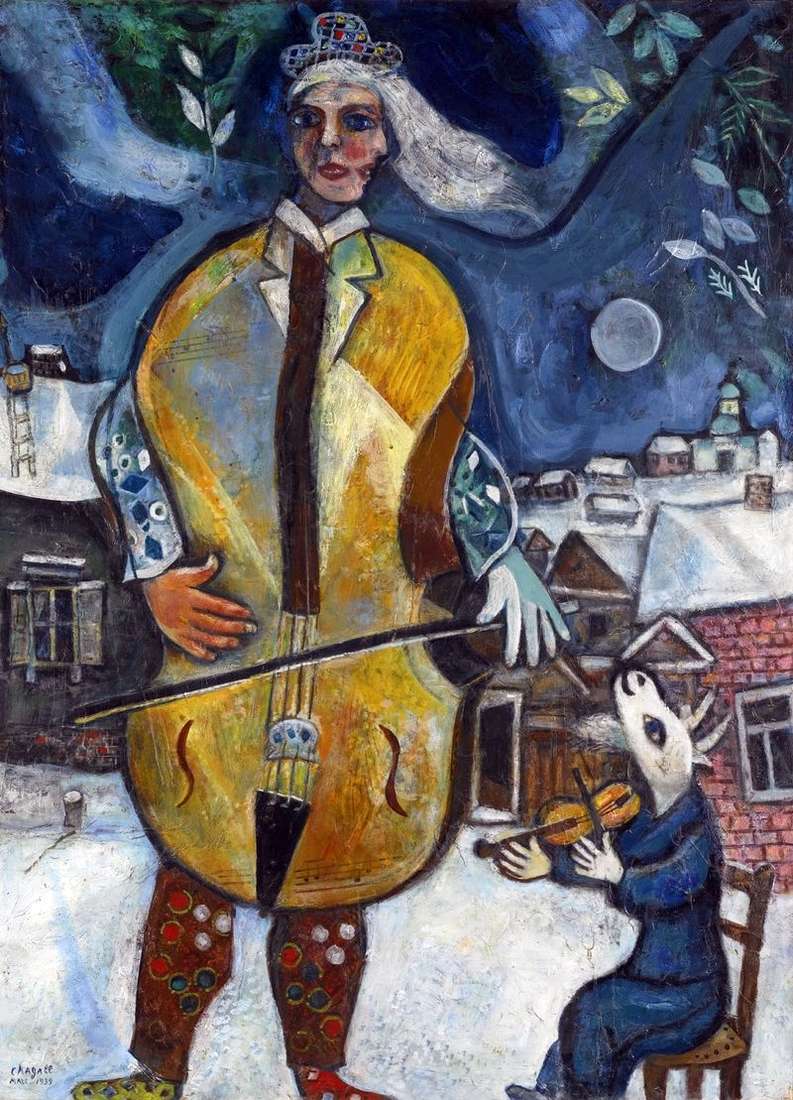 Cellist by Marc Chagall
Cellist by Marc Chagall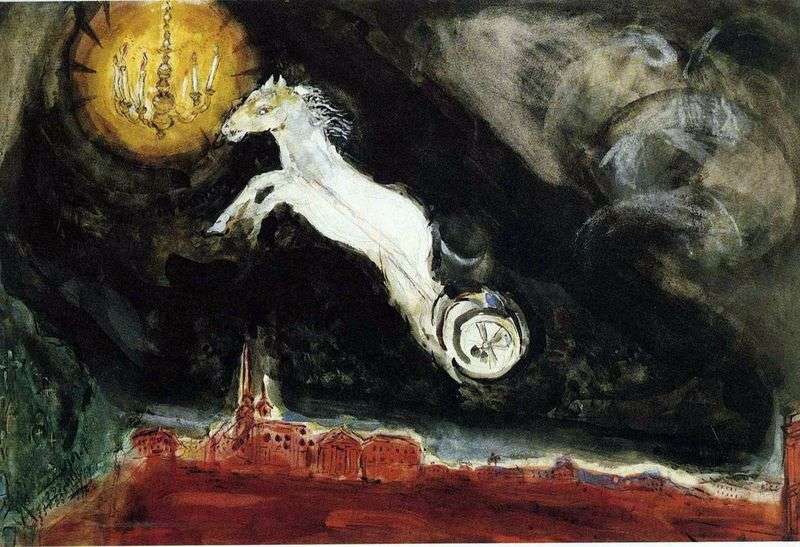 Theater by Marc Chagall
Theater by Marc Chagall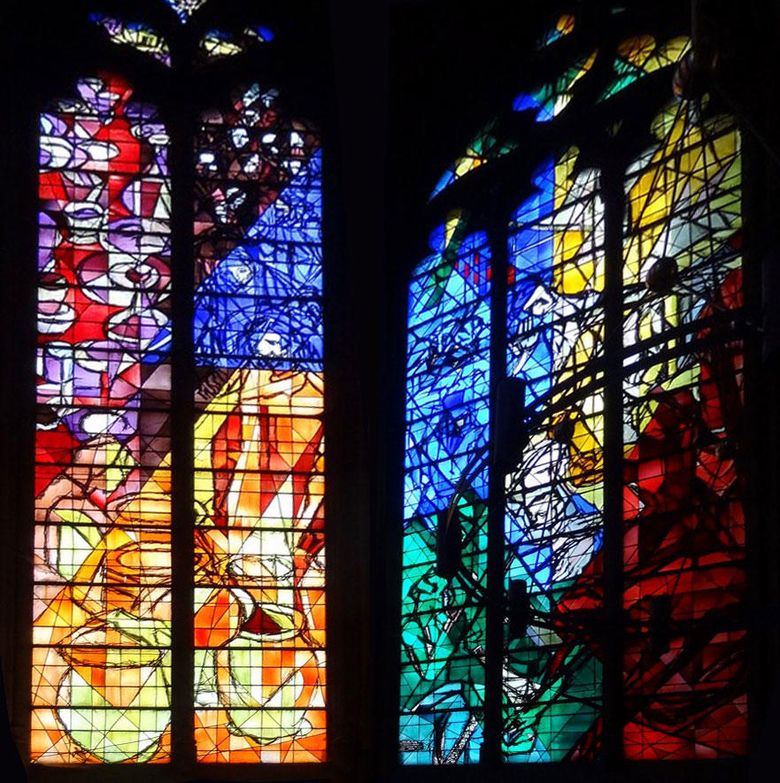 Vitraux de la cathédrale Saint-Étienne de Metz – Marc Chagall
Vitraux de la cathédrale Saint-Étienne de Metz – Marc Chagall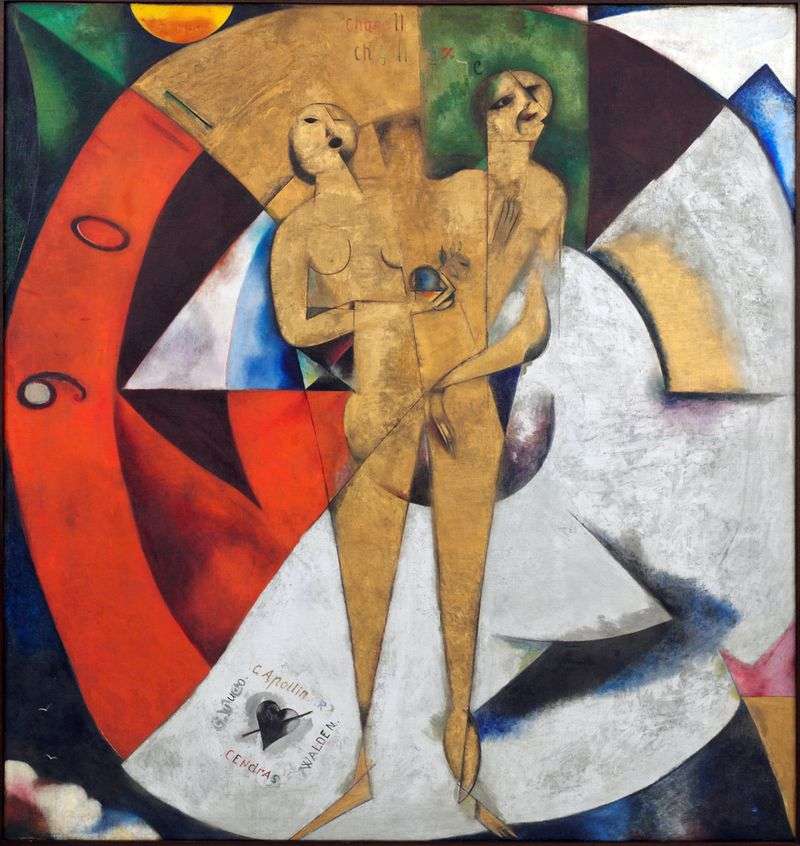 Dedication to Apollinaire by Marc Chagall
Dedication to Apollinaire by Marc Chagall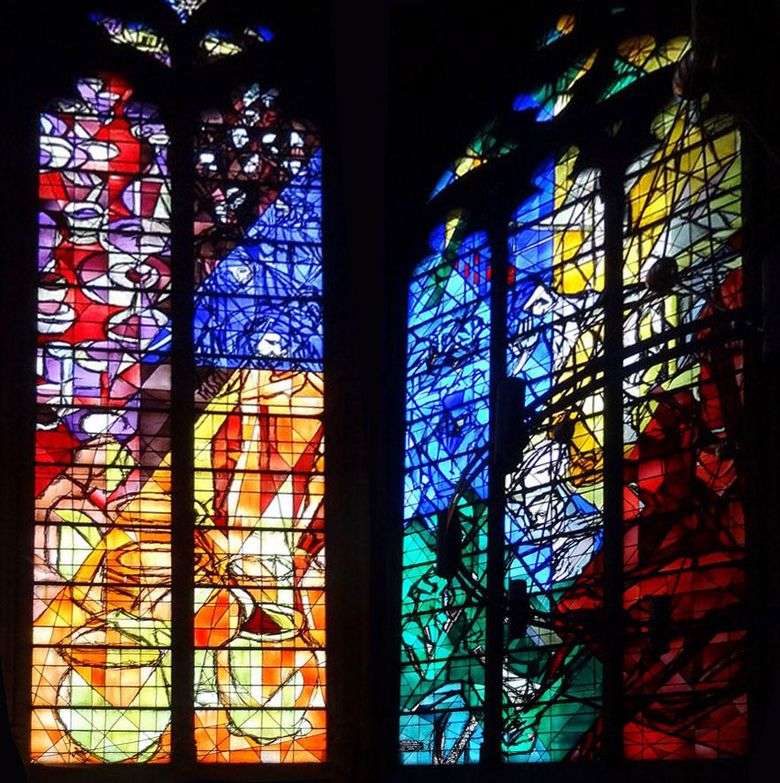 Vidrieras de la catedral de San Esteban en Metz – Marc Chagall
Vidrieras de la catedral de San Esteban en Metz – Marc Chagall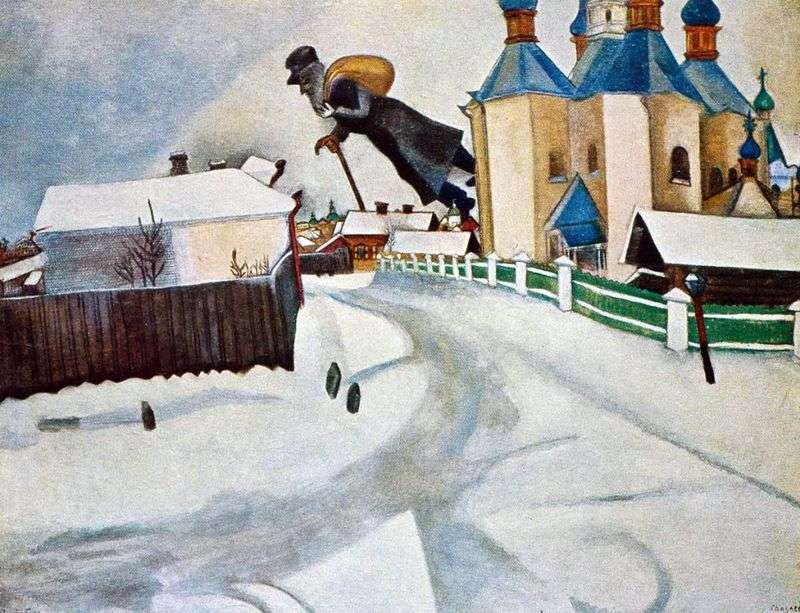 Above the Vitebsk by Marc Chagall
Above the Vitebsk by Marc Chagall Christmas by Paolo Uccello
Christmas by Paolo Uccello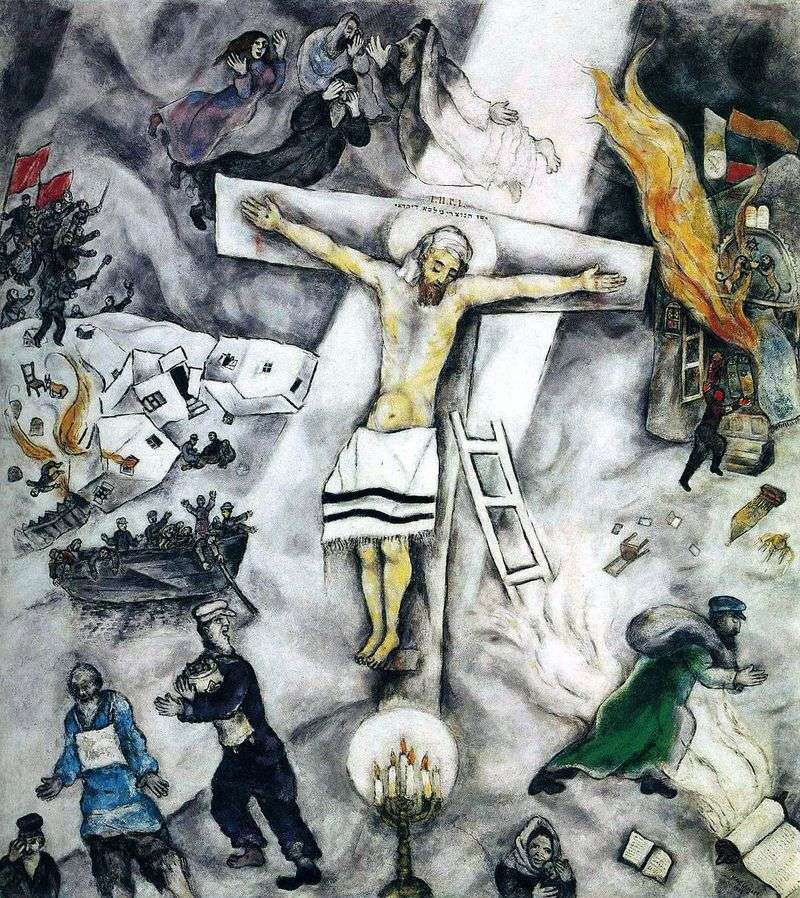 The White Crucifix by Marc Chagall
The White Crucifix by Marc Chagall